Otto Dix (1891-1969) was a German painter, printmaker, and watercolorist. In 1910-1914, he completed his studies in Dresden which was the birthplace of the German expressionist group, Brücke. He was inspired by their emotionally driven gestural and dramatic style. His work made a shift during WW1, and he was inspired by Futurism and Dadaism, therefore incorporating strong colours and abstraction. He focused on the decaying post-war aftermath and the subjects he chose to paint were prostitutes, crippled soldiers, and veterans. He was an important figure in regards to portraying the uncensored reality of war and society through satire and grotesque manners.
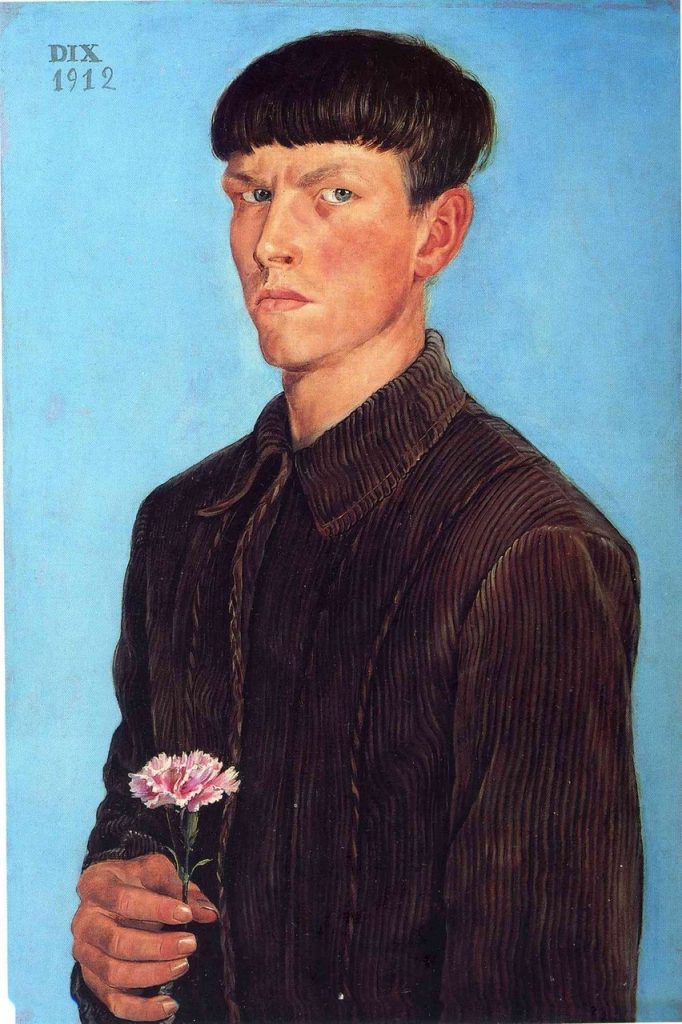
This portrait is an example of his early work, it appears very traditional which isn’t what Dix is known for, however, I find it to be very beautiful. The texture of his corduroy jacket is remarkable, I can almost feel the fabric. I love how his expression is serious but he’s holding a tiny pink carnation. The shine on his fingernails is another detail I adore.
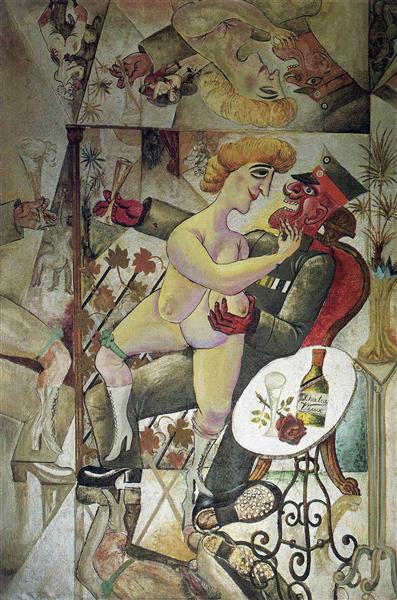
Dix is such a wild guy for painting this. Of all the paintings I’ve seen this semester, this one takes the cake for being the most shocking to me. I’ve never seen anything like it. The intimate scene is jarring enough but then Dix goes ahead and paints it again in reflections! I love the distorted perspective, especially that of the table. I also like that he combined two controversial subjects: war officer and prostitute. A double whammy for sure.
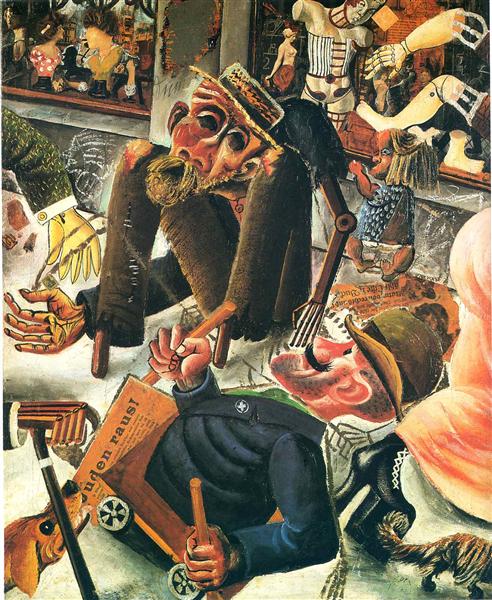
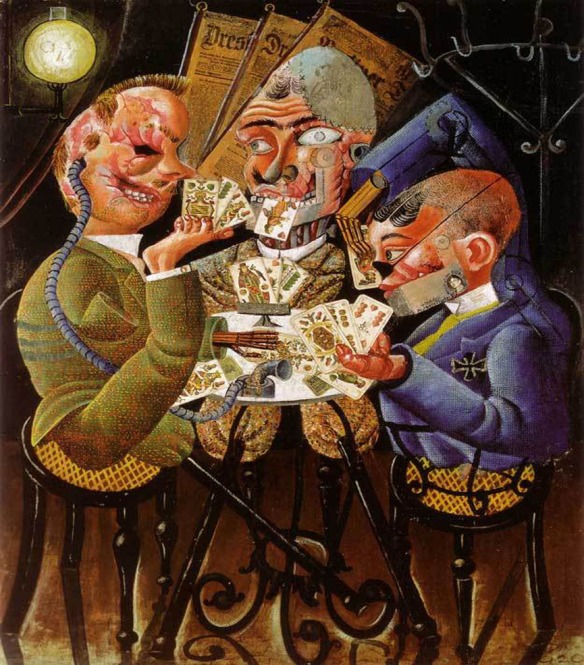
These two are haunting examples of crippled veterans Dix would paint. The first depict mutilated beggars on the street and the second are men playing skat, a 3 player card game popular in Germany. The wacky style of both of these draw me in. It takes awhile to deconstruct every that’s going on. I couldn’t help but laugh when I realized one of the card players were holding cards in between his toes.
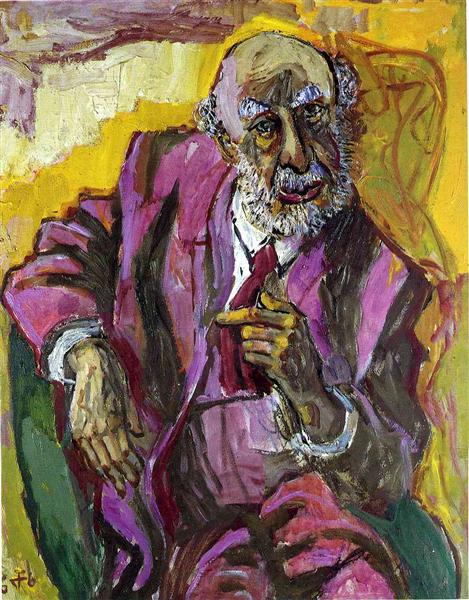
Here’s one of Dix’s later works. It’s a portrait of the famous German psychiatrist Fritz Perls. The fact that Dix painted him shows the status he built for himself as an artist. The purple suit is magnificent and I like the contrast of it towards the yellow background. I think the pose is great too, the expression in the hands and tilt of the head give the portrait personality.
Sources:
https://search-credoreference-com.ezproxy.capilanou.ca/content/entry/bga/dix_otto_1891_1969/0
https://www.wikiart.org/en/otto-dix
https://www.moma.org/s/ge/collection_ge/artist/artist_id-1559.html